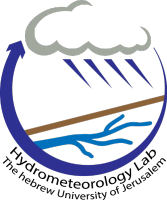Neta A, Gafni R, Elias H, Bar-Shmuel N, Shaltiel-Harpaz L, Morin E, Morin S.
Decision support for pest management: Using field data for optimizing temperature-dependent population dynamics models. Ecological Modelling [Internet]. 2021;440 (July 2020) :109402.
Publisher's VersionAbstractInsect physiology is highly dependent on the environmental temperature, and the relationship can be mathematically defined. Thus, many models that aim to predict insect-pest population dynamics, use meteorological data as input to descriptive functions that predict the development rate, survival and reproduction of pest populations. In most cases, however, these functions/models are laboratory-driven and are based on data from constant-temperature experiments. Therefore, they lack an important optimization and validation steps that test their accuracy under field conditions. Here, we developed a realistic and robust regional framework for modeling the field population dynamics of the global insect pest Bemisia tabaci. First, two non-linear functions, development rate (DR) and female reproduction (EN) were fitted to data collected in constant temperature experiments. Next, nine one-generation field experiments were conducted in order to establish a field-derived database of insect performance, representing a variety of growing conditions (different seasons, regions and host plants). Then, sensitivity analyses were performed for identifying the optimal time-scale for which the running-averaged temperatures should be fed to the model. Setting the time to 6 h (i.e., each of the 24-time steps per day represents the last 6 h average) produced the best fit (RMSD score of 1.59 days, 5.7% of the mean) between the field observations and the model simulations. We hypothesize that the 6 h ‘relevant biological time-scale' captures the insect's physiological memory of daily cycling temperature events. Lastly, we evaluated the potential of the developed modeling framework to serve as a decision support tool in pest-management programs by correlating the model predictions with field-observations of three pest control inspectors during 2019. The model successfully predicted the first notable appearance of the insect in the field (completion of the third generation in May). Also, the model correctly identified the sharp rise in abundance (outbreak point) in mid-July (completion of the fifth generation), and the persistent rise in abundance through August and September. Comparing the simulations of the 2018 and 2019 seasons indicated that the model can also serve as a tool for retrospective systematic assessment of major decisions. Taken together, these data demonstrate the model robustness and its potential to provide an excellent decision-making support platform in regional control of pest species.

